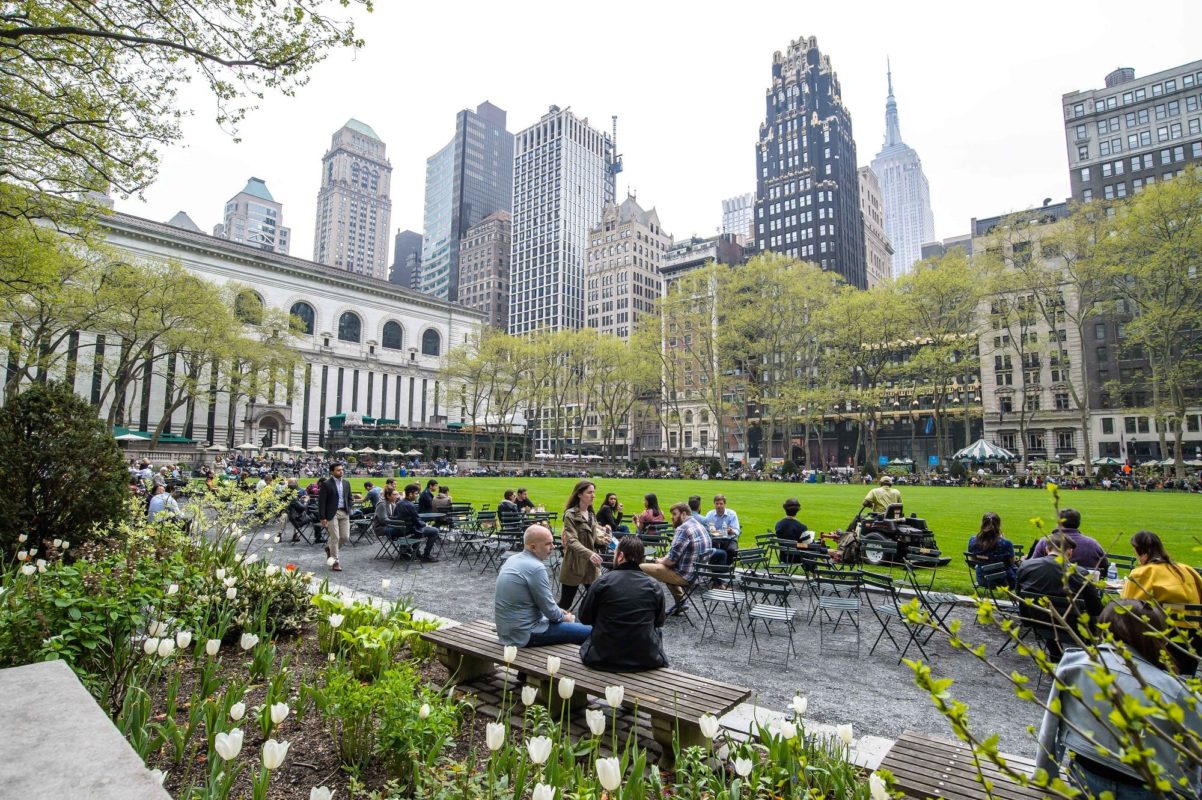The Bryant Park Fire is an incident that has captured the attention of many New Yorkers and beyond. This event highlights the importance of fire safety and emergency preparedness in urban environments. As one of the most iconic parks in Manhattan, Bryant Park plays a significant role in the city's cultural and social life. The fire that occurred here serves as a reminder of the potential risks and challenges faced by urban areas.
Bryant Park is more than just a recreational space; it is a hub for community events, art exhibitions, and public gatherings. The fire incident has raised important questions about safety measures, emergency response strategies, and the long-term impact on the park's ecosystem and surrounding areas. Understanding the causes and consequences of the Bryant Park Fire is crucial for enhancing public awareness and improving urban safety protocols.
In this article, we will delve into the details of the Bryant Park Fire, explore its causes, effects, and the measures taken to mitigate its impact. We will also discuss the lessons learned and the steps being taken to prevent similar incidents in the future. By analyzing this event comprehensively, we aim to provide valuable insights for urban planners, emergency responders, and the general public.
Read also:Katy Perry Nudes Leaked
Table of Contents
- Biography of Bryant Park
- Overview of the Bryant Park Fire Incident
- Causes of the Fire
- Effects on the Park and Surrounding Areas
- Emergency Response and Recovery Efforts
- Lessons Learned and Preventive Measures
- Community Impact and Public Reaction
- Environmental Considerations
- Future Plans for Bryant Park
- Conclusion and Call to Action
Biography of Bryant Park
Brief History of Bryant Park
Bryant Park, located in Midtown Manhattan, has a rich history dating back to the early 19th century. Originally known as Reservoir Square, the park was renamed in honor of William Cullen Bryant, a renowned poet and journalist. Over the years, Bryant Park has undergone several renovations and transformations, becoming one of New York City's most beloved public spaces.
Today, the park hosts a variety of events, including the Bryant Park Summer Film Festival, fashion shows, and ice skating during the winter months. It serves as a gathering place for locals and tourists alike, offering a serene escape from the bustling city life.
Overview of the Bryant Park Fire Incident
Key Details of the Fire
The Bryant Park Fire occurred on [Date], causing significant damage to parts of the park. The fire started near the park's southern end and quickly spread due to favorable wind conditions and dry vegetation. Emergency services were alerted promptly, and firefighters worked tirelessly to contain the blaze.
Several factors contributed to the rapid spread of the fire, including the park's dense foliage and the presence of flammable materials. Despite the challenges, the fire was eventually brought under control, minimizing potential harm to nearby buildings and residents.
Causes of the Fire
Possible Triggers
Investigations into the Bryant Park Fire revealed several possible causes, including:
- Human error, such as improperly discarded cigarettes or unattended campfires.
- Natural causes, like lightning strikes or spontaneous combustion of dry organic matter.
- Potential equipment malfunction, such as faulty wiring in park lighting or electrical systems.
While the exact cause is still under investigation, authorities emphasize the importance of adhering to fire safety regulations and guidelines to prevent future incidents.
Read also:Kourtney Kardashian Leaks
Effects on the Park and Surrounding Areas
Impact on Local Ecosystem
The Bryant Park Fire had a profound impact on the park's ecosystem. Many trees and plants were severely damaged, disrupting the natural habitat of local wildlife. The smoke and ash also affected air quality in the surrounding neighborhoods, prompting health advisories for residents.
Efforts are underway to restore the park's greenery and promote ecological recovery. This includes replanting native species and implementing sustainable landscaping practices to enhance the park's resilience against future fires.
Emergency Response and Recovery Efforts
Role of Emergency Services
The response to the Bryant Park Fire was swift and coordinated. Firefighters from multiple stations collaborated to extinguish the flames and protect nearby structures. Law enforcement agencies provided crowd control and ensured public safety during the operation.
Following the fire, recovery efforts focused on cleaning up debris, assessing structural damage, and restoring park facilities. Volunteers and community organizations played a vital role in supporting these efforts, demonstrating the strength and solidarity of the local community.
Lessons Learned and Preventive Measures
Improving Fire Safety Protocols
The Bryant Park Fire underscores the need for improved fire safety protocols in urban parks. Recommendations include:
- Installing fire detection and suppression systems throughout the park.
- Conducting regular inspections and maintenance of park infrastructure.
- Implementing public education campaigns to raise awareness about fire prevention.
By adopting these measures, urban planners and park authorities can significantly reduce the risk of future fire incidents and enhance public safety.
Community Impact and Public Reaction
Public Response and Support
The Bryant Park Fire elicited a strong response from the community, with many residents expressing concern and offering support for recovery efforts. Social media platforms were filled with messages of solidarity and calls for action to prevent similar incidents in the future.
Community leaders organized fundraising events and volunteer initiatives to aid in the park's restoration. This outpouring of support highlights the deep connection between the community and Bryant Park, reinforcing its role as a vital cultural and social institution.
Environmental Considerations
Sustainable Practices for Urban Parks
In the wake of the Bryant Park Fire, there is a growing emphasis on incorporating sustainable practices into urban park management. This includes using fire-resistant materials, promoting biodiversity, and adopting water-efficient landscaping techniques.
Environmental experts advocate for a holistic approach to park design and maintenance, ensuring that urban green spaces are both beautiful and resilient. By prioritizing sustainability, cities can create parks that benefit both people and the planet.
Future Plans for Bryant Park
Renovation and Expansion Projects
Looking ahead, plans are underway to renovate and expand Bryant Park, incorporating lessons learned from the fire incident. Proposed projects include:
- Installing additional fire safety features, such as hydrants and sprinkler systems.
- Enhancing park amenities to improve visitor experience and accessibility.
- Creating educational programs to promote fire safety awareness and environmental stewardship.
These initiatives aim to transform Bryant Park into a model of urban resilience and sustainability, setting a benchmark for other cities around the world.
Conclusion and Call to Action
In conclusion, the Bryant Park Fire serves as a powerful reminder of the importance of fire safety and emergency preparedness in urban environments. By understanding the causes and effects of this incident, we can take proactive steps to prevent similar occurrences in the future.
We invite you to join us in supporting the restoration and enhancement of Bryant Park. Share this article with your network, participate in community initiatives, and stay informed about fire safety practices. Together, we can ensure that Bryant Park continues to thrive as a vibrant and safe space for all to enjoy.
For further reading, explore related articles on urban safety, environmental conservation, and community engagement. Your involvement can make a meaningful difference in shaping the future of our cities and the spaces we cherish.



